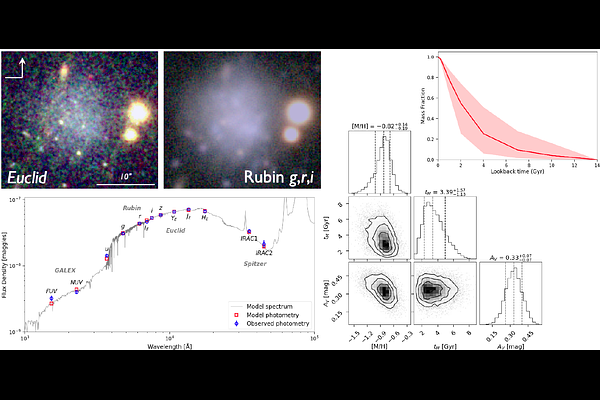Morphology and stellar populations of a candidate ultra-diffuse galaxy in early Euclid and Rubin imaging

Morphology and stellar populations of a candidate ultra-diffuse galaxy in early Euclid and Rubin imaging
Aaron J. Romanowsky, Yimeng Tang, Kevin A. Bundy
AbstractWe present multi-wavelength imaging and analysis of a low surface brightness (LSB) dwarf galaxy in the Extended Chandra Deep Field South (ECDFS), SMDG0333094-280938, with particular emphasis on data from the Euclid space telescope and from the Vera C.\ Rubin Observatory. The galaxy is clumpy and blue, and appears to host globular clusters (GCs), suggesting a distance of ~50-60 Mpc which would make the dwarf an ultra-diffuse galaxy (UDG). We carry out spectral energy distribution (SED) fitting from the far-ultraviolet to the near-infrared, in order to estimate the galaxy age and metallicity. We infer a recent peak of star formation that may have led to the formation of the UDG through feedback-driven expansion. This early analysis illustrates how Euclid and Rubin are poised to identify and characterize many thousands of UDGs and other LSB galaxies in the near future, including their GCs and stellar populations.